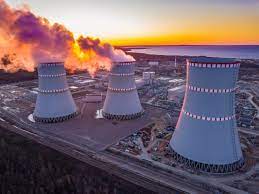Status Of India’s Nuclear Energy:

India’s nuclear power capacity experienced a significant increase. By 2021-22, it had risen to 47,112 Million Units.
- In 2017, the government gave simultaneous approval for 11 indigenous pressurised heavy water reactors with a total capacity of 7,000 MegaWatts.
- Nuclear energy is the fifth-largest source of electricity for India which contributes about 3% of the total electricity generation in the country.
- India has over 22 nuclear reactors in 7 power plants across the country which produces 6780 MW of nuclear power. In addition, one reactor, Kakrapar Atomic Power Project (KAPP-3) has also been connected to the grid in January- 2021.
- 18 reactors are Pressurised Heavy Water Reactors (PHWRs) and 4 are Light Water Reactors (LWRs).
- KAPP-3 is the India’s first 700 MWe unit, and the biggest indigenously developed variant of the PHWR.
- Government has also allowed Joint Ventures with PSUs to enhance India’s nuclear program.
- As a result, the Nuclear Power Corporation of India Limited (NPCIL) is now in two joint ventures with the National Thermal Power Corporation Limited (NTPC) and the Indian Oil Corporation Limited (IOCL).
- In the past, India’s nuclear installations were mostly located in South India or in Maharashtra and Gujarat in the west.
- However, the government is now promoting its expansion to other parts of the country. As an example, the upcoming nuclear power plant in Gorakhpur town of Haryana, which will become operational in the near future.
- The world’s first thorium-based nuclear plant, “Bhavni,” using Uranium-233, is being set up at Kalpakkam in Tamil Nadu.
- This plant will be entirely indigenous and will be the first of its kind. The experimental thorium plant “Kamini” already exists in Kalpakkam.




